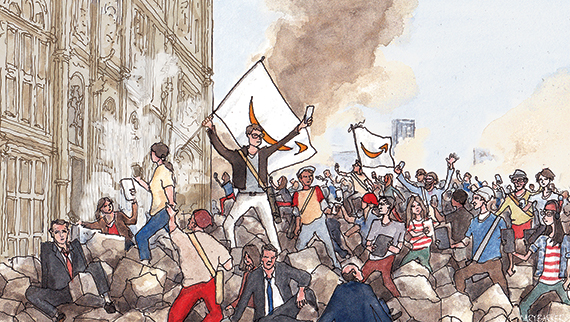 Retail thrives on revolution. Products and formats that turn convention on its head become winners, and brands that evolve slowly become consigned to high street nostalgia – something that Woolworths and now BHS know only too well.
Retail thrives on revolution. Products and formats that turn convention on its head become winners, and brands that evolve slowly become consigned to high street nostalgia – something that Woolworths and now BHS know only too well.
Ten years ago, few people could have predicted that platforms such as Facebook, Instagram and Pinterest would be an incremental part of the shopping journey, or that customers could now reasonably expect items to be delivered to them within an hour of purchase. Change in itself isn’t new; retail has always kept up with consumers’ lifestyles and latest cravings.
However, the use of digital products and its rapid progression poses a unique challenge for the modern workforce. For the first time, the younger generations are far more savvy and knowledgeable than the generation above – namely, their bosses.
So it is not a complete surprise that new research from the World Retail Congress and TrueStart has shown that more than a third of UK retail chief executives are deemed “not fit for purpose” when it comes to the strategic abilities needed to keep up with the pace of change in the digital arena. In the realm of innovation, it’s often the pre-digital generations that are in charge of change, and the retail industry is no different.
The day-to-day lives of today’s shoppers are a seamless mix of physical, digital, and everything in between, so their shopping experience needs to deliver the same, particularly to keep pace with the expectations of Generation Z and millennials, for whom brand loyalty is a near-redundant concept. And for brands to succeed, they need to be able to deliver to expectations, which is why they don’t just need a workforce that is digitally savvy; they need members of their teams across various disciplines to see digital innovation as normality rather than an inconvenience to business strategy. Ask yourself why most retailers have scrapped their separate store and online teams and formed one multichannel workforce.
At Hammerson, if I look back a decade, I think it would be fair to say that the background of most staff would have been in the real estate and finance spheres. Yet in 2015, 40% of Hammerson’s new recruits ticked the millennials box, with colleagues joining from brands such as Liberty, Secretsales. com, bwin.party and marieclaire.co.uk. The reality is that it is not necessarily just about age. It’s about skill set, a breadth of experience and being able to see opportunities that can make a difference to how our shoppers behave.
To stay at the forefront of retail innovation, we need to have a collaborative approach between those with decades of expertise and those who grew up in the digital age. Our teams are put together based on skill sets rather than years of experience. Some projects are being delivered by teams in their 20s, while other teams are a mix of graduate recruits and board-level colleagues.
In an ever-changing world, the youngest members of the team might have just as much to offer as their bosses.
David Atkins is chief executive of Hammerson











